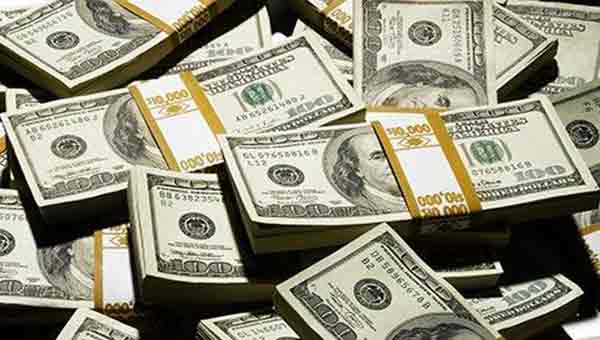 Dhaka, Bangladesh (BBN)- The inflow of remittances grew by 9.65 per cent to a record US$16.42 billion in the just-concluded fiscal year (FY) as the exchange rate of local currency weakened against the US dollar.
Dhaka, Bangladesh (BBN)- The inflow of remittances grew by 9.65 per cent to a record US$16.42 billion in the just-concluded fiscal year (FY) as the exchange rate of local currency weakened against the US dollar.
The figure jumped from $14.98 billion in FY 2017-18, according to the central bank’s latest statistics.
The remittance inflow was estimated at $1.37 billion in June last, down by $387.54 million from that of the previous month. In May 2019, the amount stood at $1.75 billion. It was $1.38 billion in June 2018.
The central bankers expect that the upward trend in inward remittance will continue in the current fiscal year as the government has announced 2.0 per cent incentive for remittance receipts.
The government has already allocated BDT 30.60 billion in the budget for this fiscal to encourage expatriate workers to send their money through legal channels.
They also said the exchange rate of Bangladesh Taka (BDT) against the US dollar in the banking channel is almost equal to the kerb market in the last three months.
“It has impacted positively to receive the record amount of remittances in the FY ’19,” a senior central banker told the BBN in Dhaka.
Senior bankers, however, said the flow of inward remittance maintained an upward trend in recent months due to the depreciation of local currency against the US dollar.
Meanwhile, the local currency depreciated by 77 poisha against the US dollar in the inter-bank foreign exchange market in FY ‘19 mainly due to higher demand for the greenback, according to market operators.
The US currency was quoted at BDT 84.50 each in the inter-bank foreign exchange market on Sunday, the last working day of the fiscal, unchanged from the previous level.
It was BDT 83.73 in June 2018.
The higher demand for the BDT for settling the import obligations caused the depreciation.
Currently, 29 Bangladeshi exchange houses are operating across the world along with more than 1,200 drawing arrangements abroad to boost the remittance inflow, according to BB officials.
Four state-run commercial banks and dozens of private commercial banks have stepped up their efforts to increase remittance flow from the Middle East, the United Kingdom, Malaysia, Singapore, Italy and the United States.
Most of the banks are now trying to increase the flow of inward remittances from different parts of the world through establishing drawing arrangements with overseas companies, according to insiders in the banking sector.
“We’re trying desperately to increase the flow of inward remittances to meet our own import liabilities,” Syed Mahbubur Rahman, chairman of the Association of Bankers, Bangladesh (ABB), said while explaining the bank’s initiatives to receive the remittances.
Such initiatives will continue until the improvement of the country’s current account situation, the senior banker added.
Bangladesh’s current account deficit continues to pose risks to the macroeconomic stability despite its 35 per cent fall in the July-April period of FY ‘19.
The gap stood at $5.06 billion between July last year and April this year, according to the central bank statistics.
The central bank of Bangladesh had earlier took a series of measures to encourage the expatriate Bangladeshis to send their hard-earned money through the formal banking channel, instead of the illegal "hundi" system, which can help boost the country's foreign exchange reserves.
However, forex reserve rose to US$32.57 billion on Tuesday from $32.53 billion in the previous working day, another BB official said.
“The country’s forex reserve may fall shortly after making the payment to the Asian Clearing Union,” the central banker hinted.
BBN/SSR/AD